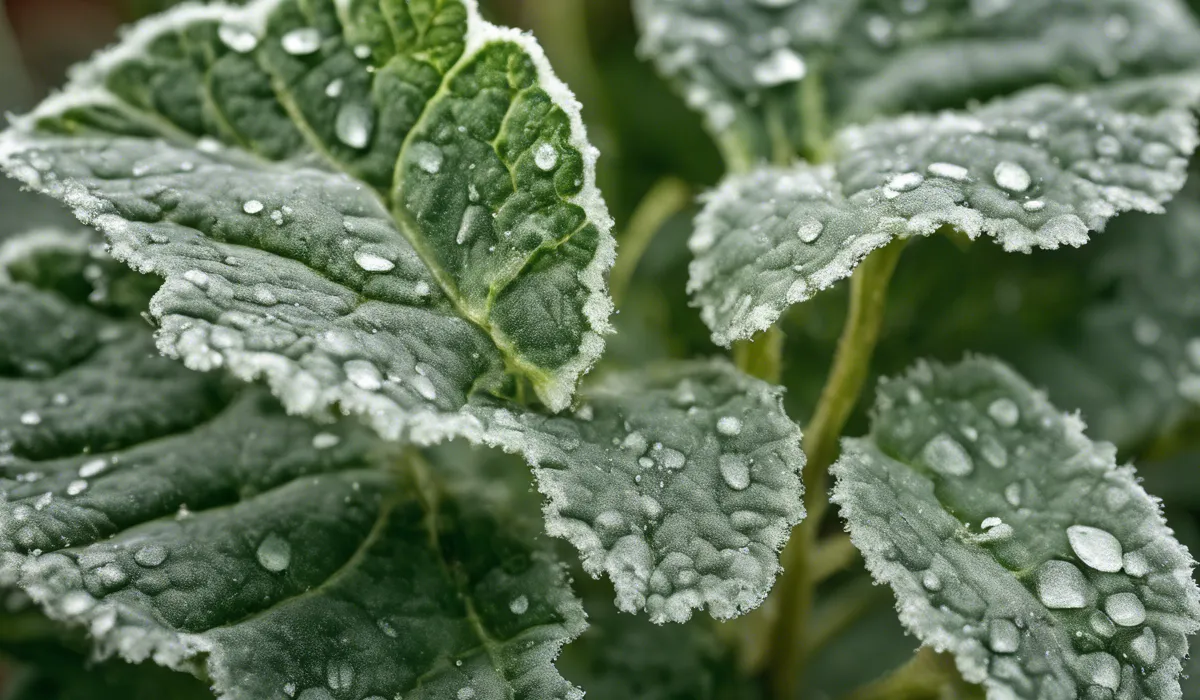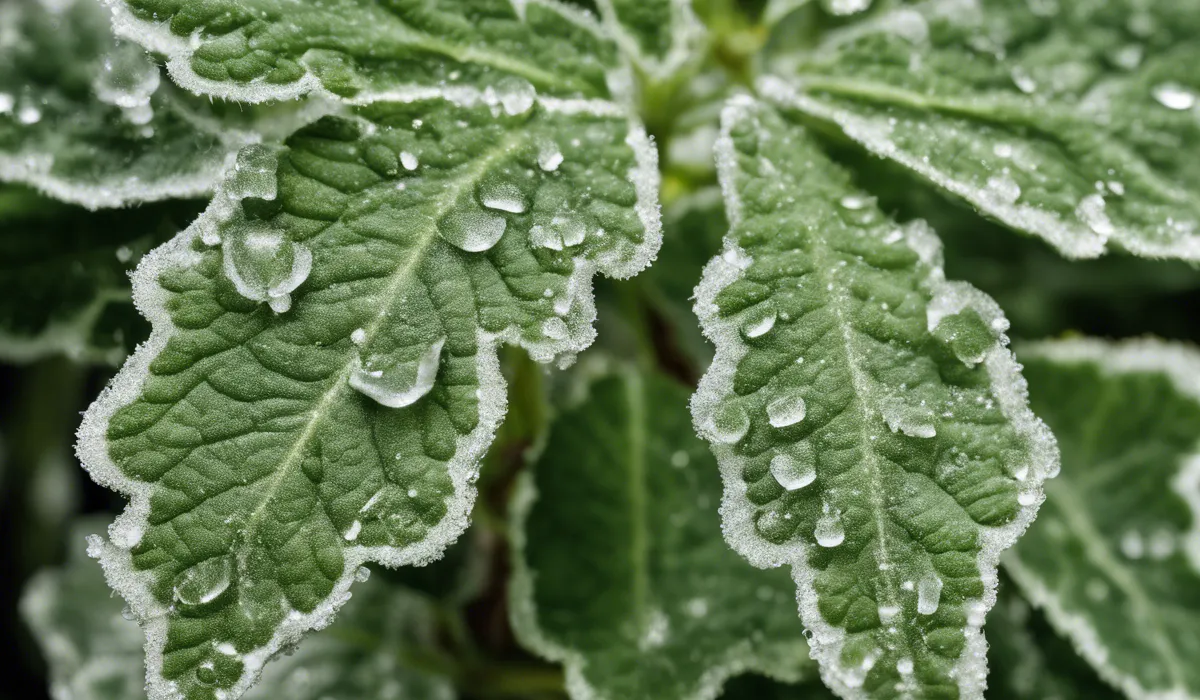Powdery mildew is a contagious fungal disease that can spread to other plants via wind, insects, or contaminated tools. It thrives in dry foliage conditions. Prompt treatment is essential to prevent its spread.
Understanding Powdery Mildew

Definition of Powdery Mildew
Powdery mildew is a fungal disease that affects a wide range of plants, causing white or gray powdery spots on leaves and stems.
The mildew can weaken plants, stunt their growth, and reduce yields. It’s important to note that powdery mildew is not just one disease but rather a group of fungal species, each with a preference for different plant hosts.
Common Plants Affected by Powdery Mildew
Many plants can suffer from powdery mildew, including vegetables like cucumbers and squash, ornamentals like roses and phlox, and fruit trees such as apples and grapes.
Even houseplants are not immune. If left unchecked, it can severely affect the health and appearance of these plants.
Lifecycle and Development of Powdery Mildew Spores
The lifecycle of powdery mildew begins with spores that land on a suitable host plant. These spores germinate and form a network of filaments that extract nutrients from the plant.
As the fungus grows, it produces more spores that can be dispersed to other plants.
Environmental Conditions Conducive to Powdery Mildew Growth
Powdery mildew thrives in warm, dry climates with high humidity levels around the plant foliage.
It does not require the presence of water on the leaf surface for infection. Poor air circulation and crowded planting conditions can also contribute to its spread.
Transmission and Spread of Powdery Mildew

How Powdery Mildew Spores are Spread?
Wind and Air Currents
Wind is the primary mode of transportation for powdery mildew spores. They can travel long distances, making even remote plants vulnerable to infection.
Insects and Animals
Insects and animals can carry spores from one plant to another as they move through a garden or field, unwittingly contributing to the spread of the disease.
Human Activity
Gardeners can spread spores via their clothing, tools, or hands when they handle an infected plant and then touch a healthy one.
Factors Contributing to the Contagiousness of Powdery Mildew
Proximity of Infected Plants
Plants that are close together are more likely to pass the mildew spores between them, especially if they are touching or nearly touching.
Presence of Susceptible Host Plants
Some plants are more susceptible to powdery mildew than others. Gardens with a high number of susceptible species can experience rapid spread if the disease is introduced.
Climate and Weather Patterns
Weather patterns that promote dry leaves and high humidity levels, such as those found during late spring and early summer, can facilitate the spread of powdery mildew.
Management and Prevention of Powdery Mildew

Cultural Practices to Prevent the Spread
Plant Spacing and Air Circulation
Good garden planning can help prevent powdery mildew. Spacing plants properly and ensuring adequate air circulation reduces the risk of spore transfer between plants.
Proper Watering Techniques
Watering plants at the base rather than from above will help keep foliage dry and less hospitable to powdery mildew spores. Early morning watering allows any moisture on the foliage to dry quickly in the sun.
Sanitization of Tools and Equipment
Cleaning tools and equipment that have come into contact with infected plants can prevent the spread of powdery mildew to healthy plants.
Chemical and Organic Treatment Options
Fungicides
Chemical fungicides can be effective in controlling powdery mildew. However, they should be used as a last resort and according to the instructions to avoid harming beneficial insects.
Homemade Remedies
Homemade remedies, such as baking soda sprays or milk solutions, can provide a less toxic alternative for managing powdery mildew, although their effectiveness may vary.
Resistant Varieties and Breeding for Resistance
Choosing plant varieties that are resistant to powdery mildew is a proactive way to prevent the disease. Plant breeders are continually developing new varieties with improved resistance.
Monitoring and Early Detection Strategies
Regular monitoring of plants for signs of powdery mildew can lead to early detection and treatment, curbing the spread of the disease before it becomes a larger problem.
FAQs About Powdery Mildew Contagiousness
Is powdery mildew a contagious plant disease?
Yes, powdery mildew is a highly contagious fungal disease that can spread to nearby plants.
How does powdery mildew spread from one plant to another?
Powdery mildew spreads via wind, insects, and contaminated tools, moving spores from one plant to another.
Can dry conditions contribute to the spread of powdery mildew?
Yes, powdery mildew thrives in dry foliage conditions, which can contribute to its spread.
Is it important to treat powdery mildew immediately?
Yes, prompt treatment of powdery mildew is essential to prevent its spread to other plants.
Can cleaning tools help prevent the spread of powdery mildew?
Cleaning gardening tools can help prevent the spread of powdery mildew by removing contaminated spores.
Final Thoughts
Powdery mildew is highly infectious, capable of spreading rapidly to other plants via wind, insects, or the use of contaminated gardening tools.
This fungal disease favors dry foliage, making vigilant monitoring and swift action crucial to contain and mitigate its proliferation among plants.
